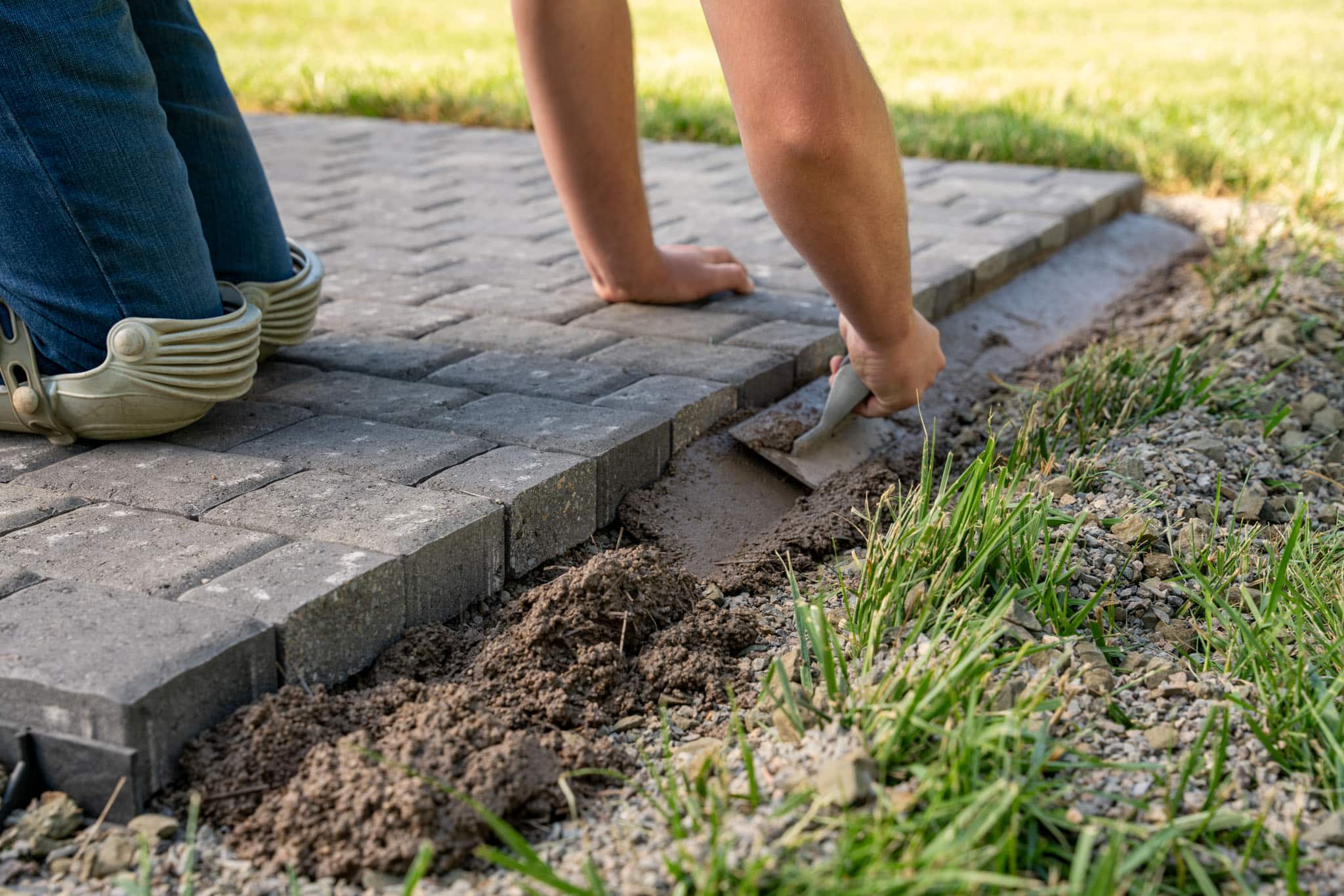
Paver Edging: The Ultimate Guide to Enhancing Your Outdoor Spaces
Introduction
Paver edging, also known as paver restraints or paver borders, plays a crucial role in defining and enhancing the aesthetics of outdoor spaces. These versatile elements serve multiple purposes, from securing pavers in place to creating visually appealing borders and accents. This comprehensive guide will delve into the various types, materials, and installation techniques of paver edging, empowering you to make informed decisions for your next landscaping project.
Types of Paver Edging
1. Rigid Edging
- Concrete Edging: Durable and long-lasting, concrete edging provides a sturdy border for pavers.
- Steel Edging: Heavy-duty and rust-resistant, steel edging is ideal for high-traffic areas.
- Plastic Edging: Flexible and easy to install, plastic edging is a cost-effective option.
2. Flexible Edging
- Landscape Fabric: Woven or non-woven fabric that prevents weeds and allows water drainage.
- Rubber Edging: Durable and versatile, rubber edging is ideal for curved or irregular borders.
- Aluminum Edging: Lightweight and corrosion-resistant, aluminum edging is suitable for both residential and commercial applications.
Materials for Paver Edging
1. Concrete
- Advantages: Durable, long-lasting, and can be customized with colors and textures.
- Disadvantages: Heavy and can be difficult to install.
2. Steel
- Advantages: Rust-resistant, strong, and can be painted or powder-coated.
- Disadvantages: Can be expensive and requires professional installation.
3. Plastic
- Advantages: Lightweight, flexible, and easy to install.
- Disadvantages: Not as durable as concrete or steel and can fade over time.
4. Landscape Fabric
- Advantages: Prevents weeds, allows water drainage, and is cost-effective.
- Disadvantages: Not as durable as other materials and can be difficult to keep in place.
5. Rubber
- Advantages: Durable, flexible, and can be used for curved or irregular borders.
- Disadvantages: Can be expensive and may require professional installation.
6. Aluminum
- Advantages: Lightweight, corrosion-resistant, and suitable for both residential and commercial applications.
- Disadvantages: Can be more expensive than other materials.
Installation Techniques
1. Trenching Method
- Dig a trench around the perimeter of the paver area.
- Insert the edging into the trench and backfill with compacted soil.
2. Spike Method
- Use spikes or stakes to secure the edging directly into the ground.
- This method is suitable for flexible edging materials.
3. Adhesive Method
- Apply adhesive to the bottom of the edging and press it into place.
- This method is suitable for rigid edging materials.
4. Pin Method
- Use pins to secure the edging to the pavers.
- This method is often used for flexible edging materials on sloping surfaces.
Benefits of Paver Edging
1. Aesthetics
- Defines the perimeter of paver areas, creating a polished and finished look.
- Adds visual interest and enhances the overall design of outdoor spaces.
2. Functionality
- Secures pavers in place, preventing movement and shifting.
- Prevents weeds from growing between pavers, reducing maintenance.
- Improves drainage by directing water away from pavers, reducing the risk of erosion.
3. Safety
- Creates a stable and level surface for walking and driving.
- Prevents tripping hazards caused by uneven or loose pavers.
4. Durability
- Protects pavers from damage caused by foot traffic, vehicle weight, and weather conditions.
- Extends the lifespan of paver installations.
Choosing the Right Paver Edging
- Consider the type of pavers: Rigid edging is best for concrete or natural stone pavers, while flexible edging is suitable for smaller or irregularly shaped pavers.
- Evaluate the intended use: High-traffic areas require durable materials like concrete or steel, while residential applications may prefer more cost-effective options like plastic or landscape fabric.
- Determine the desired aesthetics: Paver edging comes in various colors, textures, and styles to complement different outdoor designs.
Installation Tips
- Plan the layout: Determine the exact location and shape of the paver area before installing the edging.
- Use the correct tools: Use a level, tape measure, and appropriate digging tools to ensure proper installation.
- Compact the soil: Backfill the trench or compact the ground around the edging to provide a solid foundation.
- Secure the edging: Use spikes, stakes, adhesive, or pins to firmly secure the edging in place.
- Maintain the edging: Regularly check the edging for any loose or damaged sections and make necessary repairs promptly.
Conclusion
Paver edging is an essential element for any outdoor space featuring pavers. By understanding the different types, materials, and installation techniques, you can choose the right edging for your specific needs. Whether you prioritize aesthetics, functionality, or durability, paver edging will enhance the beauty, safety, and longevity of your outdoor paver installations.